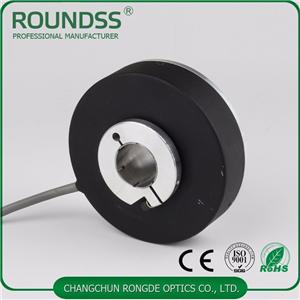- 홈
- >
- 뉴스
- >
- Industry News
- >
- What types of encoder cables are there?
What types of encoder cables are there?
First, the encoder line is replaced by a five-class eight-core civil network cable. This is confusing by some technical support that can only be said to be simple "twisted shielded cable". The five types of eight-core communication lines are also truly twisted-pair shielded, but the twisted pair is a common network signal that is not demanding for civilian use (can be broken and renewed), while the shielding layer is thin aluminum foil, only for very high frequencies. It has a reflection effect, and it can not shield the lower electromagnetic wave. Its capacitance and inductance characteristics do not match the frequency range of the encoder.
Ordinary network Ethernet signals have a checksum and fault-tolerant design that allows a small amount of lost signal to be replenished. The encoder pulse and the SSI signal are not allowed to have a missing signal.
Second, the shielding layer is not dense enough. Some cable shielding layers for cutting corners are either thin aluminum foil or sparse aluminum wire, which does not shield and reflect and absorb interference.
Third, the broken head is connected too much, the line head burrs and aging. Preferably, the encoder signal to the receiving end is a cable. The less the middle connection, the better. The contact points are mostly reflective surfaces and emitting heads. The internal reflection and external emission increase the signal glitch and distortion. Waveforms are not susceptible to interference and signal loss.
Long-term aging of the cable will change the performance of the insulation layer, change the capacitance characteristics or leakage, and if the cable moves frequently, or there is a broken wire burr, the line capacitance will be broken.
Fourth, only emphasizes the DC or AC low-frequency current-carrying characteristics of the cable cross-sectional area in place, and there is no high-frequency design of the signal cable. There are not many strands in the inner core of the cable, only the cross-sectional area is relatively thick, and the high-frequency signal goes to the surface. If the high-frequency capacitor inductance of the cable is not designed, the waveform of the high-frequency electromagnetic wave is lost.
Fifth, cable material, including copper, insulation, filling lines, shielding layer, inferior and low price. This must be assessed by the supplier's accumulated ISO9000 quality assurance system for many years. It is more than three years for a supplier to have a stable quality in an industrial system.




